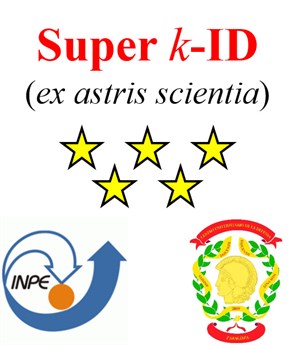 An international team, which included researchers from Texas A&M University, the Instituto Nacional de Pesquisas Espaciais (São José dos Campos, Brazil) and the Centro Universitario de la Defensa - Zaragoza (Spain) placed first in the “Star Trackers – First Contact” challenge sponsored by the European Space Agency’s Advanced Concepts Team.
An international team, which included researchers from Texas A&M University, the Instituto Nacional de Pesquisas Espaciais (São José dos Campos, Brazil) and the Centro Universitario de la Defensa - Zaragoza (Spain) placed first in the “Star Trackers – First Contact” challenge sponsored by the European Space Agency’s Advanced Concepts Team.
Space navigation is quite different from ground navigation. The main difference is that in space, the most accurate references are the stars. Therefore, spacecraft navigate using the stars as references to achieve very precise pointing of their instruments. This is a complex process known as the star identification problem.
Star trackers are devices commonly present in most spacecraft to determine orientation based on camera images of stars. In 2016 the Advanced Concepts Team issued a yearlong “Star Trackers – First Contact” challenge to researchers all over the world to identify the fastest and most robust star identification solution and advance the state-of-the-art.
The process begins with the cameras on board the spacecraft observing the sky and providing a picture containing a handful of stars, which form patterns that must be found and identified in a much larger star catalog containing thousands of stars and potentially millions of patterns. The software that accomplishes this task must be very fast and reliable to work on board the spacecraft autonomously. In addition, it must be robust to discriminate actual stars from other objects that may be present in the picture (visible planets, reflections from debris or other satellites, etc.).
In the competition, a star catalog is given, together with a number of possible scenes, and the participants are asked to submit a file containing the identification made for all stars in each scene, and optionally a separate file containing their code. Given only one image as information, the scenario models a spacecraft being “lost in space,” which means there is no prior information on the spacecraft’s orientation. The goal is to recover a sense of orientation allowing the spacecraft to keep pursuing the goal of its mission.
The challenge ended Aug. 31, 2017. The winning team placed first for both robustness and speed with their new algorithm called “Super k-ID.” The Super k-ID winning team members include:
- Dr. Marcio Fialho (Instituto Nacional de Pesquisas Espaciais), who led the effort by coding, debugging, testing and improving Super k-ID to the winning version;
- David Arnas (the Centro Universitario de la Defensa - Zaragoza), who developed optimal combinatory kernel sequences, making the algorithm very robust;
- Dr. Christian Bruccoleri (Texas A&M), who provided a large experience on Star-ID algorithms;
- Dr. Daniele Mortari (Texas A&M), doctorate advisor of Fialho and Bruccoleri, who developed the k-vector technique, making the algorithm very fast.